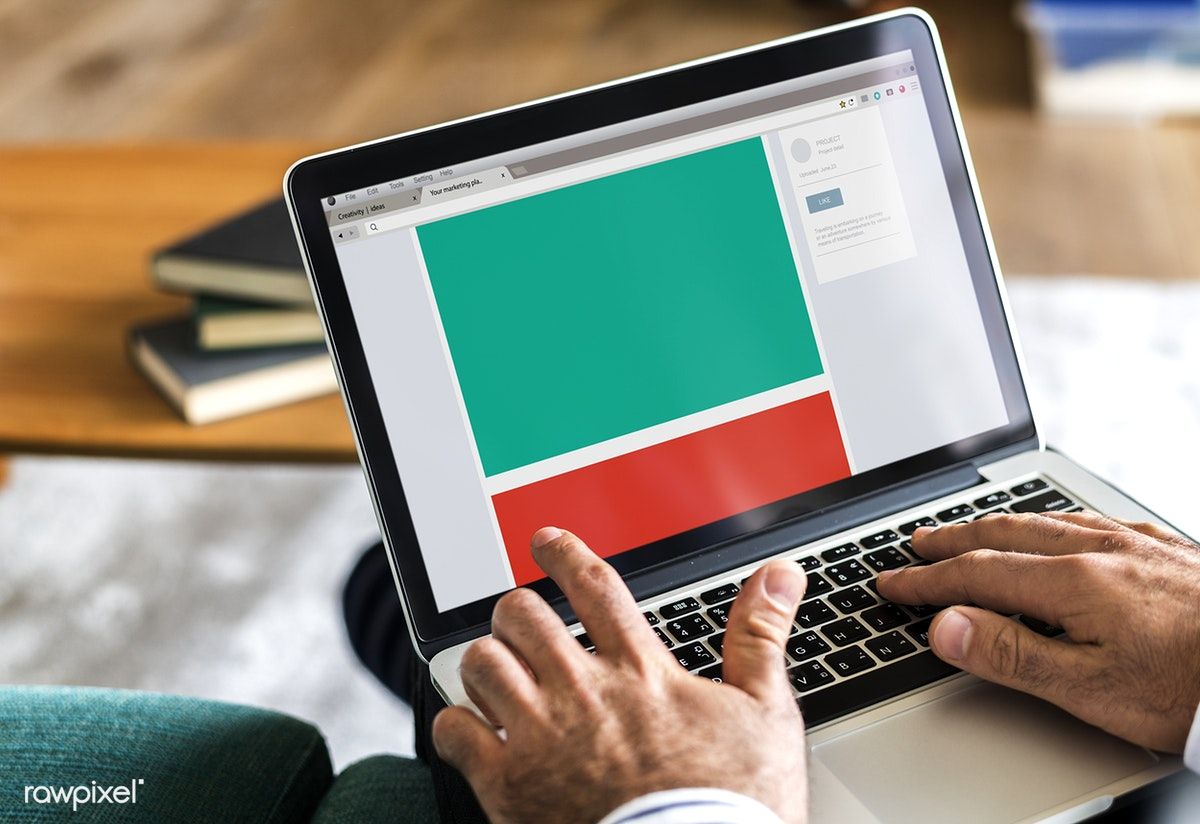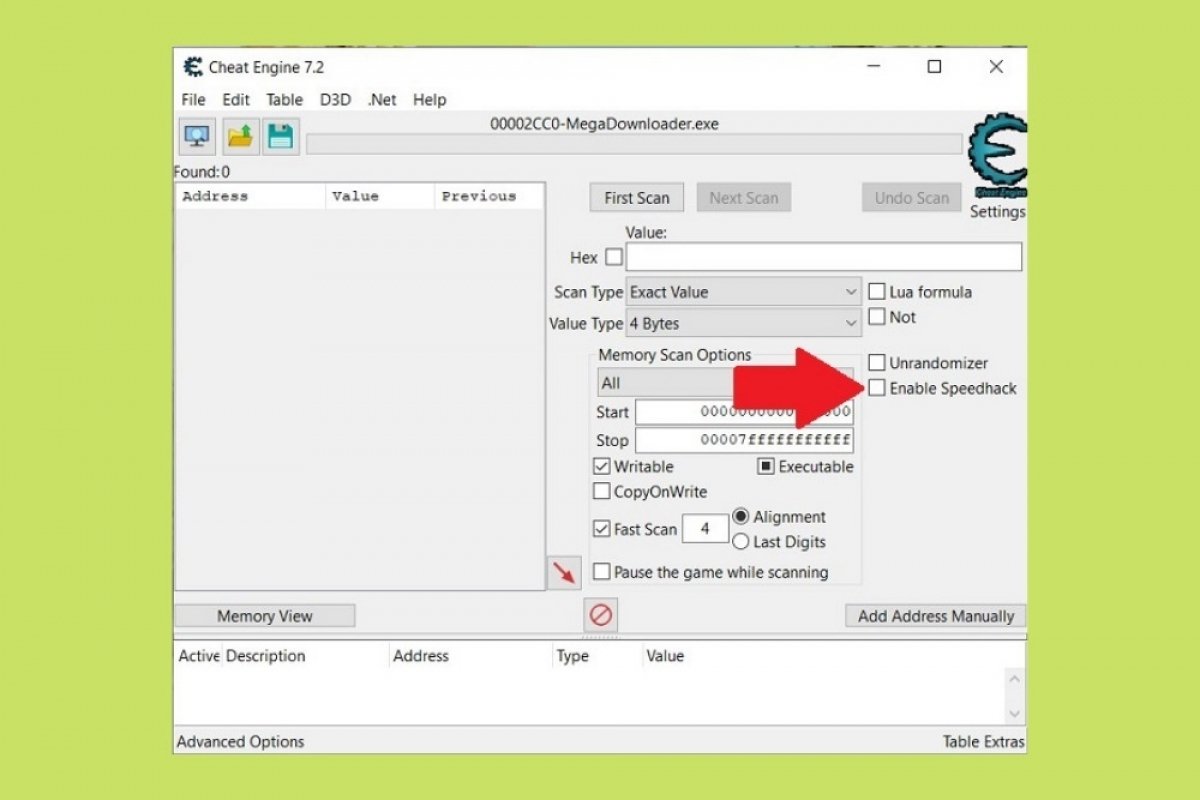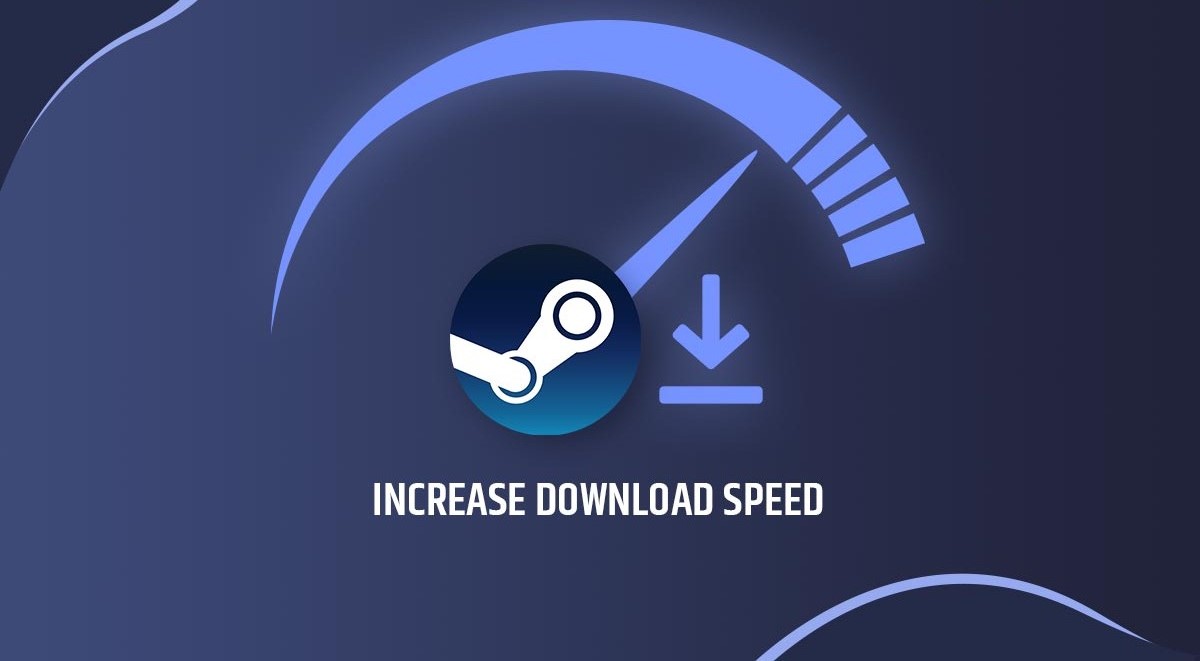Introduction
Have you ever felt frustrated when trying to download a file and it seems to take forever? Slow download speeds can be incredibly frustrating, especially when you’re in a rush or have limited time. Fortunately, there are several steps you can take to optimize your download speed and ensure faster file downloads. In this article, we will explore various methods and techniques that can help you download files faster.
With the increasing prevalence of high-speed internet connections, downloading files quickly has become a necessity for many. Whether you’re downloading a large software package, a video file, or even just a PDF document, every second counts. By following the tips and tricks outlined in this article, you can significantly reduce download times and make the most out of your bandwidth.
Before we dive into the specific steps, it’s important to note that the speed at which you can download a file is dependent on several factors, such as your internet connection speed, the server you’re downloading from, and the download manager you’re using. While you may not have control over all these factors, implementing the tips in this guide can optimize your download process and help you make the most of your available resources.
In the following sections, we will guide you through a series of steps to download files faster. We will explore how to check and improve your internet connection, choose the right download manager, optimize download settings, select the best server, utilize download accelerators, close background applications, clear temporary files, upgrade your internet connection if necessary, disable firewall and antivirus programs when appropriate, and connect through an Ethernet cable for a more stable and faster connection.
By the end of this article, you’ll be equipped with the knowledge and tools necessary to download files faster and save valuable time. So, let’s get started and boost your download speeds to make the most of your internet connection!
Step 1: Checking Internet Connection
Before diving into the process of downloading files faster, it’s crucial to ensure that your internet connection is stable and running at its optimal speed. A slow or unreliable connection can greatly hinder your download speeds, so let’s take a moment to check your internet connection. Follow these steps:
- Restart your router: Sometimes, simply restarting your router can resolve minor connectivity issues. Power off your router, wait for a few seconds, and then power it back on. This can help refresh your connection and eliminate any temporary glitches.
- Check your internet speed: Use an online speed test tool to check your current internet speed. There are several reliable websites that provide this service for free. A speed test will give you valuable insights into your upload and download speeds. If your speed is significantly below what you’re paying for, contact your internet service provider (ISP) to troubleshoot the issue.
- Move closer to your Wi-Fi router: If you’re connected to a Wi-Fi network, ensure that you’re in close proximity to your router. Walls, furniture, and other objects can interfere with the signal strength, resulting in slower speeds. Moving closer to the router can help improve the connection and subsequently enhance your download speeds.
- Connect through an Ethernet cable: If possible, connect your device directly to the router using an Ethernet cable. Wired connections tend to be more stable and faster than wireless connections. This can be particularly beneficial when downloading large files that require a significant amount of bandwidth.
By taking these steps, you can ensure that your internet connection is stable and running at its optimal speed. This sets a strong foundation for faster and more efficient file downloads. Once you’ve confirmed that your connection is working well, you can proceed to the next step of choosing the right download manager.
Step 2: Choosing the Right Download Manager
When it comes to downloading files, having the right download manager can make a significant difference in your overall download speed and performance. A download manager is a software application that helps you manage and optimize your downloads by breaking them into multiple segments and simultaneously downloading them. This can help speed up the download process and increase your overall download speed. Follow these tips to choose the right download manager:
- Consider your operating system: Start by considering the operating system you’re using. Different download managers are designed for specific operating systems, such as Windows, macOS, or Linux. Make sure to choose a download manager that is compatible with your system.
- Look for features: Check for features that can enhance your download experience. Look for download managers that offer accelerated downloading, support for resuming downloads, and the ability to schedule downloads for off-peak hours. These features can help optimize your download speed and allow you to have more control over your downloads.
- Read reviews: Before making a decision, read reviews and user experiences with different download managers. These reviews can provide valuable insights into the performance, reliability, and user-friendliness of the software. Look for download managers that have positive reviews and a good reputation among users.
- Consider browser integration: Some download managers offer browser integration, which allows you to seamlessly initiate downloads directly from your web browser. This can be a convenient feature that saves you time and effort.
- Check for customization options: Look for download managers that provide customization options. This includes the ability to set bandwidth limits, prioritize downloads, and choose the number of simultaneous downloads. Customization options allow you to optimize your downloads based on your specific preferences and available resources.
By considering these factors, you can choose a download manager that aligns with your needs and enhances your download speed. Remember that the right download manager can significantly improve your download experience and save you valuable time. Once you’ve selected a download manager, proceed to the next step to optimize your download settings.
Step 3: Optimizing Download Settings
After selecting the appropriate download manager, it’s time to optimize the download settings to further enhance your download speed. By tweaking the settings, you can maximize the efficiency of your downloads and reduce any potential bottlenecks. Follow these steps to optimize your download settings:
- Adjust the number of connections: Most download managers allow you to specify the number of connections to be used for downloading. Experiment with different values to find the optimal number for your internet connection. Increasing the number of connections can help utilize more bandwidth and speed up the download process.
- Set download location: Choose a download location that is on a fast and reliable drive. Ideally, select a location that has ample free space and is not filled with unnecessary files. This ensures smooth and uninterrupted downloads.
- Limit download speed: If you want to ensure a consistent internet experience while downloading files, you can set a limit for the maximum download speed. This prevents the download manager from consuming all your bandwidth and allows you to perform other online activities simultaneously.
- Enable automatic retries: Enable the option for automatic retries for failed or interrupted downloads. This can help handle temporary network issues and resume the download from where it left off, thereby saving you time and frustration.
- Clear download queue: Regularly clear your download queue to remove completed or unnecessary downloads. This helps organize your downloads and ensures that queued files do not interfere with the active download process.
By optimizing your download settings, you can fine-tune the download manager according to your internet connection and personal preferences. These settings can significantly improve your download speed and provide a smoother downloading experience. Once you’ve optimized your download settings, move on to the next step to learn about selecting the right server for your downloads.
Step 4: Selecting the Right Server
When downloading files from the internet, the server from which you are downloading plays a crucial role in determining your download speed. Selecting the right server can significantly improve your download speeds and reduce any potential bottlenecks. Here are some tips to help you choose the right server for faster downloads:
- Choose geographically closer servers: When downloading files, opt for servers that are geographically closer to your location. The physical distance between you and the server can impact download speeds. Choosing a server that is located closer to you can generally result in faster downloads.
- Look for servers with high bandwidth: Select servers that have high bandwidth capacity. Servers with higher bandwidth can handle more simultaneous downloads, which can result in faster download speeds for you.
- Check server availability: Ensure that the server you choose is available and operational. Some servers may experience downtime or slow response times, which can negatively impact your download speeds. Look for servers that have reliable uptime so you can download files without delay.
- Utilize content delivery networks (CDNs): Content delivery networks are distributed systems of servers that host cached content, including files. CDNs are designed to provide faster delivery of content by serving files from servers that are closer to the end-user’s location. Consider using a download manager that supports CDNs to take advantage of faster downloads.
- Consider peer-to-peer networks: Peer-to-peer (P2P) networks utilize the resources of connected peers to distribute files. By downloading files through P2P networks, you can benefit from faster speeds as the files are downloaded from multiple sources simultaneously. However, keep in mind that downloading copyrighted content through P2P networks may be illegal in some countries.
By selecting the right server for your downloads, you can optimize your download speeds and ensure a smoother downloading experience. Take into consideration the geographical proximity, bandwidth capacity, availability, and the possibility of utilizing content delivery networks or peer-to-peer networks. These factors can significantly improve your download speeds and save you time and frustration. Once you’ve selected the right server, you can move on to the next step of utilizing download accelerators to further enhance your download speed.
Step 5: Utilizing Download Accelerators
If you’re looking to further boost your download speeds, utilizing download accelerators can be a game-changer. Download accelerators are software applications designed to optimize and streamline the download process, resulting in faster speeds. They achieve this by employing various techniques such as splitting files into multiple segments, utilizing multiple connections, and optimizing bandwidth usage. Here’s how you can make the most out of download accelerators:
- Choose a reliable download accelerator: There are several download accelerator options available, both free and paid. Research reviews and user feedback to choose a reliable and reputable accelerator that fits your needs.
- Install the download accelerator: Download and install the chosen accelerator on your computer. Ensure that it integrates smoothly with your preferred web browser and download manager.
- Enable acceleration features: Familiarize yourself with the features and settings of the download accelerator. Enable features such as file segmentation, which divides the file into several parts for simultaneous downloading, and parallel connections, which establish multiple connections to download different segments of the file simultaneously.
- Monitor the accelerator’s performance: Keep an eye on the performance of the download accelerator. Observe any improvements in download speeds and adjust settings if necessary. Some accelerators also provide real-time download speed monitoring, allowing you to track the progress.
- Utilize premium accelerators: Some download accelerators offer premium versions with additional features and benefits. Consider upgrading to a premium version if you require advanced functionalities and are committed to maximizing your download speed.
By utilizing download accelerators, you can harness advanced techniques to maximize your download speeds. These accelerators optimize the download process, making the most efficient use of available resources. Remember to choose a reliable accelerator, explore its features, and monitor its performance. With download accelerators, you can experience significantly faster download speeds and make the most of your internet connection.
Step 6: Closing Background Applications
When it comes to downloading files faster, it’s important to optimize your computer’s resources. One way to achieve this is by closing unnecessary background applications that may consume bandwidth or system resources. By doing so, you can allocate more resources to the download process and potentially increase your download speeds. Follow these steps to effectively close background applications:
- Identify resource-intensive applications: Start by identifying applications running in the background that may consume significant system resources. These can include software updaters, cloud storage syncing tools, media streaming applications, and any other programs that may be using your internet connection or consuming CPU and memory.
- Close unnecessary applications: Once you’ve identified the resource-intensive applications, close them using the appropriate methods. For most applications, you can simply exit or close the program using the close button or the exit option in the menu. Some applications may also have system tray icons that can be right-clicked to access a close or exit option.
- Disable automatic startup: Prevent resource-intensive applications from automatically starting up when you turn on your computer. Access the startup settings of your operating system and disable the applications that you do not require to run in the background. This will help free up system resources for faster file downloads.
- Utilize task manager: If you’re unsure which applications are consuming the most resources, you can use the task manager on your operating system to monitor resource usage. Identify applications with high CPU, memory, or network usage and consider closing or terminating them while downloading files.
- Optimize browser extensions: Some browser extensions or plugins can also consume system resources and impact download speeds. Evaluate your installed extensions and disable or remove any unnecessary ones. This can help streamline your browser’s performance and improve download speeds.
By closing unnecessary background applications, you can free up system resources and allocate them to the download process. This can potentially result in faster download speeds and a smoother downloading experience. Take the time to identify and close resource-intensive applications, disable automatic startup, and optimize your browser extensions. With fewer applications draining your resources, you can make the most out of your internet connection and achieve faster file downloads.
Step 7: Clearing Temporary Files
Clearing temporary files from your system can help optimize its performance and improve download speeds. Temporary files are created by various applications and can accumulate over time, taking up valuable disk space and potentially slowing down your computer. By clearing these files, you can free up disk space and create a more efficient environment for downloading files. Follow these steps to clear temporary files:
- Use Disk Cleanup utility: Most operating systems provide a built-in Disk Cleanup utility that allows you to remove temporary and unnecessary files. Access this utility and select the option to clean temporary files. The utility will scan your system and provide a list of files that can be safely removed.
- Delete browser cache: Web browsers store temporary files, including cached web pages and images, to improve browsing speed. However, these files can accumulate over time and impact your download speeds. Clear your browser cache regularly by accessing the browser’s settings or preferences and selecting the option to clear browsing data.
- Remove temporary files manually: You can manually delete temporary files from specific folders on your computer. Open File Explorer (or the equivalent file manager on your operating system) and navigate to the temporary file directories. These directories are often located in the “Temp” or “AppData” folders. Select and delete the files manually, ensuring that you are only removing temporary files and not essential system files.
- Consider using third-party cleaning tools: There are several third-party cleaning tools available that can automate the process of removing temporary files. These tools usually offer more advanced features and can help you identify and clean temporary files from various applications and system areas. Research and choose a reputable cleaning tool that suits your needs.
By clearing temporary files, you can create a cleaner and more optimized environment for downloading files. This helps enhance the performance of your computer and can potentially improve download speeds. Take advantage of the built-in Disk Cleanup utility, clear your browser cache regularly, manually delete temporary files, or utilize third-party cleaning tools. With fewer temporary files cluttering your system, you can enjoy faster and more efficient file downloads.
Step 8: Upgrading Internet Connection
If you consistently experience slow download speeds despite following the previous steps, it may be worth considering upgrading your internet connection. Upgrading your connection can provide faster download speeds and improve your overall internet experience. Here are some factors to consider when upgrading your internet connection:
- Contact your Internet Service Provider (ISP): Reach out to your ISP to inquire about available plans and upgrades. They can provide information on higher-speed packages that may be suitable for your needs and budget.
- Check for fiber-optic availability: Fiber-optic internet connections offer ultra-fast speeds and low latency. Check with your ISP to see if fiber-optic connections are available in your area. If they are, consider upgrading to take advantage of the superior speeds.
- Upgrade your modem or router: Outdated or low-quality networking equipment can bottleneck your internet speeds. Consider upgrading your modem or router to a newer, faster model that supports the latest standards and technologies.
- Consider a different type of connection: Depending on your location and availability, you may have different types of internet connections to choose from, such as cable, DSL, satellite, or fixed wireless. Research and compare the speeds and reliability of different types of connections to determine which one may offer the fastest download speeds for your area.
- Check for network congestion: Sometimes, slow download speeds can be attributed to network congestion during peak usage hours. If this is the case, consider switching to an internet plan that offers higher speeds during those hours or exploring alternative internet providers in your area.
Upgrading your internet connection can provide a significant boost in download speeds. Contact your ISP to explore available options, check for fiber-optic availability, upgrade your networking equipment if necessary, consider different types of connections, and be mindful of network congestion. By upgrading your internet connection, you can ensure that you have the fastest speeds possible for seamless and speedy file downloads.
Step 9: Disabling Firewall and Antivirus Programs
Firewalls and antivirus programs play a crucial role in protecting your computer from potential threats. However, these security measures can sometimes interfere with your download speeds. Temporarily disabling your firewall and antivirus programs, under certain circumstances and with caution, can help improve download speeds. Here’s how you can do it:
- Disable the firewall: Access the settings or control panel of your firewall software. Look for options related to turning off or disabling the firewall temporarily. Remember to only disable the firewall momentarily and re-enable it once your download is complete. This step is recommended only when downloading files from trusted sources and when your computer is adequately protected by other security measures.
- Pause or disable real-time scanning: Antivirus programs often run background scans and perform real-time scanning of files, which can significantly impact download speeds. Access the settings of your antivirus program and look for options to pause or disable real-time scanning temporarily. Again, exercise caution and only disable these features when downloading files from trusted sources.
- Whitelist the download source: If disabling your firewall or antivirus program entirely is not an option, you can whitelist the website or download source from where you’re downloading the files. Whitelisting ensures that the firewall or antivirus program does not interfere with the specific download, while still providing overall protection for your system.
- Enable firewall and antivirus after download: Once your download is complete, re-enable your firewall and antivirus programs to ensure the ongoing security of your computer. This step is crucial to protect your system from potential threats.
Note that disabling your firewall and antivirus programs comes with certain risks, as it temporarily eliminates important security measures. It is essential to exercise caution and only disable these programs when downloading files from trustworthy sources. Always enable these security measures after the download is complete to maintain the safety of your computer. If you encounter any issues or are unsure about the process, consult the documentation or support resources provided by your firewall and antivirus software providers.
Step 10: Connecting through Ethernet Cable
A stable and fast internet connection is essential for optimal download speeds. While Wi-Fi is convenient, it can sometimes be prone to interference or signal loss, resulting in slower download speeds. By connecting your device directly to your router using an Ethernet cable, you can ensure a more stable and reliable internet connection. Follow these steps to connect through an Ethernet cable:
- Locate your router: Identify the location of your router, usually found near your modem or internet connection source. Ensure that you have an Ethernet cable long enough to connect your device to the router.
- Connect one end of the cable: Plug one end of the Ethernet cable into the Ethernet port on your computer or laptop. This port is typically located on the side or rear panel of your device.
- Connect the other end of the cable: Plug the other end of the Ethernet cable into one of the available Ethernet ports on your router. These ports are usually located at the back of the router and labeled accordingly.
- Check the connection: Once the cable is connected, check the indicator lights on both your computer and the router. The lights should indicate a successful connection through the Ethernet cable.
- Disable Wi-Fi: To ensure a reliable wired connection, disable the Wi-Fi on your device. This prevents any potential interference and ensures that your device uses the Ethernet connection for internet access.
By connecting through an Ethernet cable, you can experience faster and more stable download speeds. The wired connection eliminates potential issues with Wi-Fi signal strength or interference, providing a direct and consistent connection between your device and the router. Enjoy the benefits of a reliable and high-speed internet connection for all your downloading needs.
Conclusion
Downloading files faster can greatly enhance your productivity and save valuable time. By following the steps outlined in this guide, you can optimize your download speeds and ensure a smooth downloading experience.
Here’s a quick summary of the steps covered:
- Check your internet connection to ensure it is stable and running at its optimal speed.
- Choose the right download manager that offers features like accelerated downloading and scheduling.
- Optimize your download settings by adjusting the number of connections and selecting the right download location.
- Select the right server that is geographically closer and has high bandwidth.
- Utilize download accelerators to further boost download speeds.
- Close unnecessary background applications to allocate more resources to the download process.
- Clear temporary files to free up disk space and optimize your system’s performance.
- Consider upgrading your internet connection for faster speeds.
- Temporarily disable firewall and antivirus programs when downloading from trusted sources.
- Connect your device to the router through an Ethernet cable for a stable and reliable connection.
Remember, these steps are designed to optimize your download speeds and may not guarantee instantaneous results in every scenario. Factors like your internet plan, network congestion, and the server you’re downloading from can also impact your download speeds.
By implementing these techniques, you can make the most out of your internet connection and download files faster. Enjoy quicker downloads and a more efficient downloading experience!

























